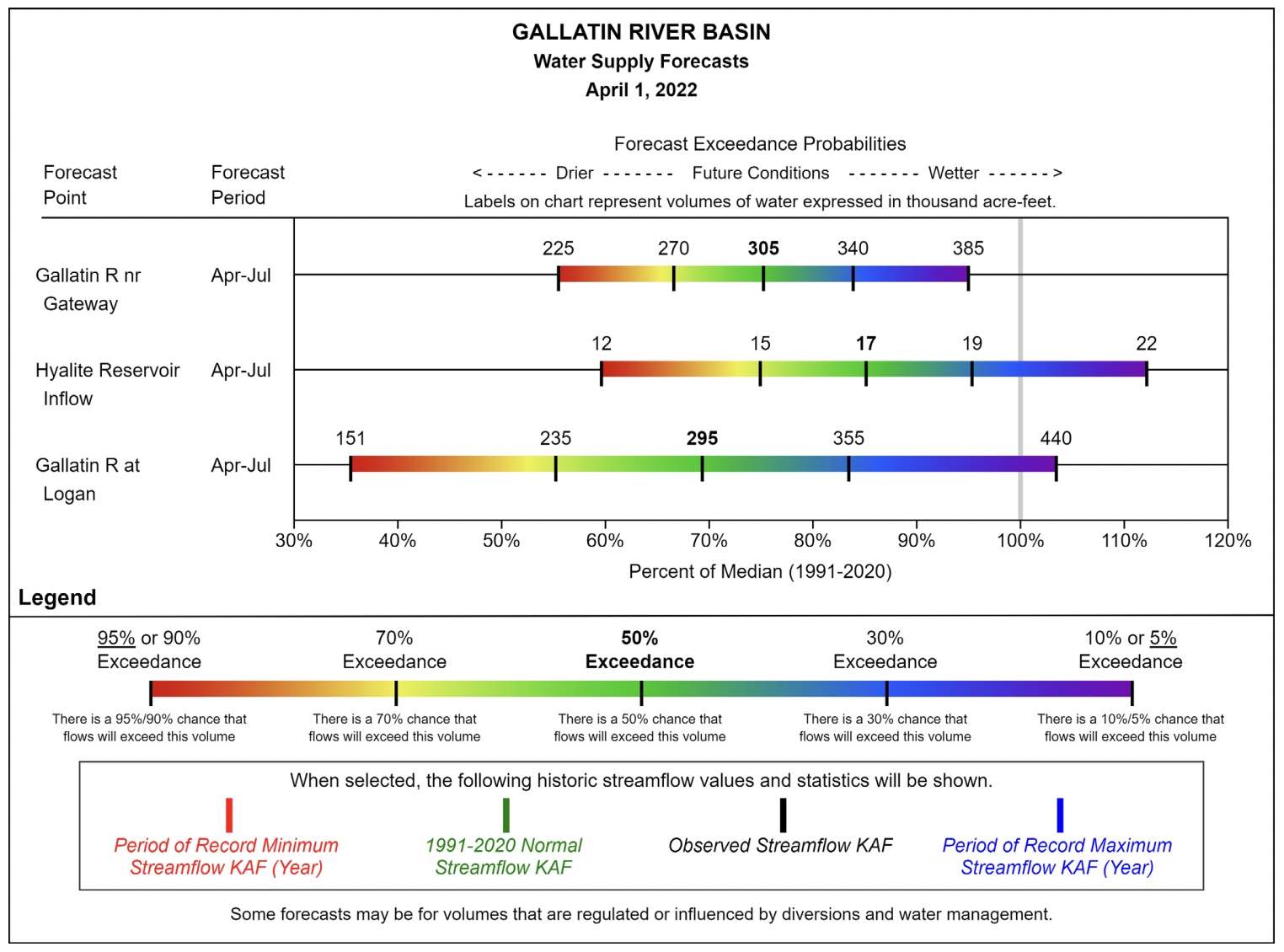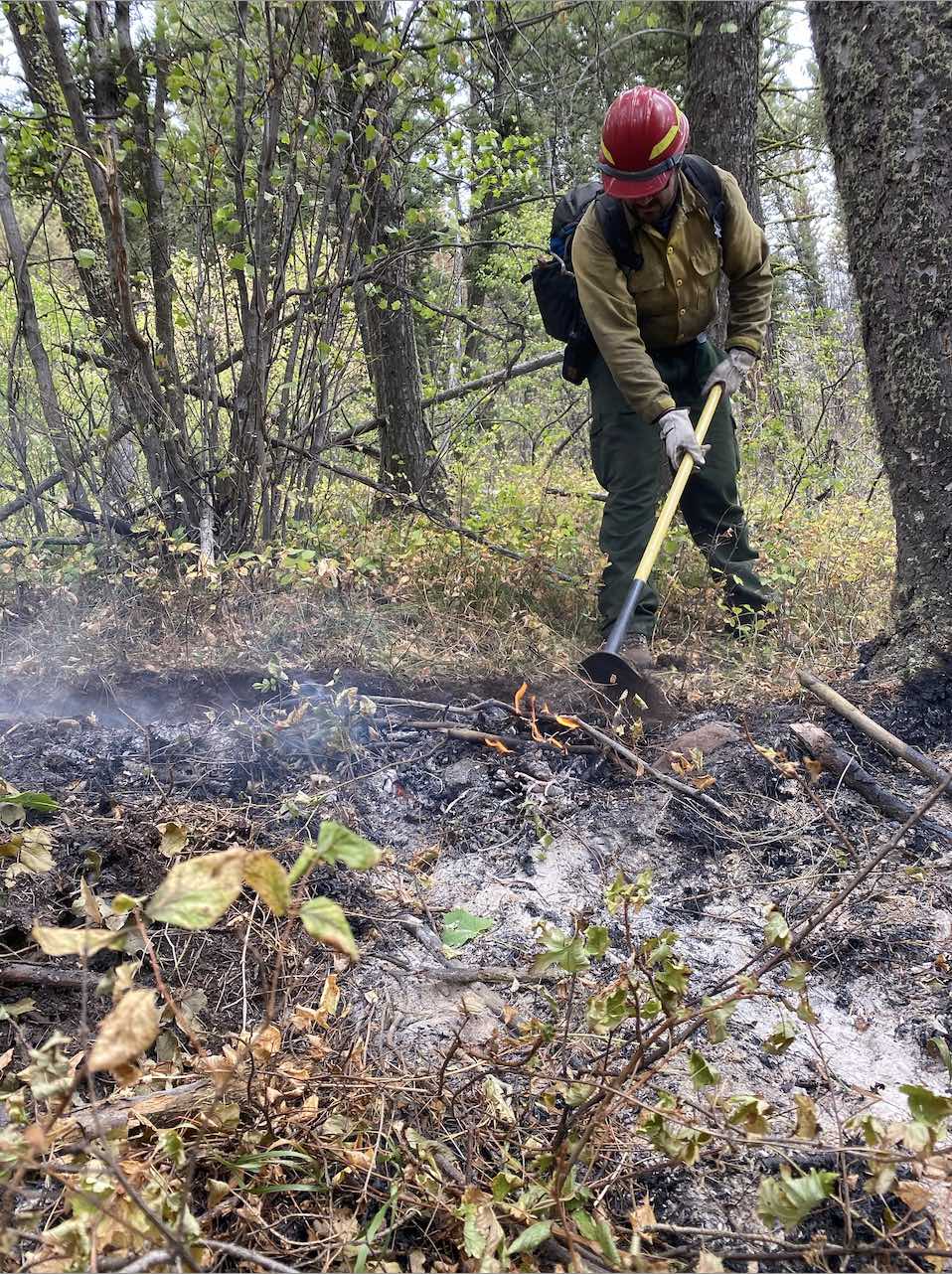News
Drought conditions bode ill for fire season
Published
3 years agoon
Posted By
Outlaw Partners
By Gabrielle Gasser ASSOCIATE EDITOR
BIG SKY – Much of the western U.S. and southwestern Montana have been experiencing moderate to extreme drought conditions this winter, and the outlook for southwestern Montana remains dry. Though conditions can change with the seasons, experts suggest current climate predictions could lead to another bad fire season.
Natural Resources Conservation Service data reveals that the snow water equivalent, or amount of liquid water contained in the snowpack, for the Gallatin Basin is at approximately 74 percent of median as of April 1. Such drought gives way to dryer fuels, a recipe for the same smoky skies Montanans may recall from last fire season.
According to NRCS Hydrologist Eric Larson, early precipitation in southwest Montana was at first promising. Precipitation measured at the Black Bear SNOTEL site near Yellowstone National Park set a record for December. According to Larson, however, unseasonably warm temperatures and a lack of precipitation since mid-January have contributed to the record lows that many SNOTEL sites across southwestern Montana have recorded between Jan. 8 and April 1.
Lingering effects from last year’s drought are having cumulative impact, as well. Coming off an exceptionally dry 2021, Larson predicts much of the moisture the region does currently have will be absorbed by dry soil.
“Consecutive dry years in a row are definitely not beneficial,” Larson said in an April 11 interview.
Current streamflow forecasts issued on April 1 by the NRCS predict the Gallatin River near Gallatin Gateway will be at 75 percent of normal flows from April to July.


The National Oceanic and Atmospheric Administration released its Spring Outlook on March 17, predicting prolonged and persistent drought in the West with below-average precipitation likely. The report also forecasts above-average temperatures for most of the U.S. in the next three months.
What does this mean for fire season?
The current National Significant Wildland Fire Potential Outlook, published by the National Interagency Coordination Center, shows that Montana is forecast to have a normal wildland fire potential until July when that rises to above normal for much of the state.
At this stage, much of the region’s fate rests in early season precipitation.
According to Caleb Schreiber, West Zone fire management officer with the U.S. Forest Service, the moisture that southwestern Montana receives in June will be a big determining factor for the 2022 fire season.
Last year is a good model: Schreiber recalled the region had a normal spring snowpack, high temperatures and no moisture, which he said set off the big fire season in Montana last year.
“If we have [a] big, wet June then that will help us out a lot,” Schreiber said in an April 1 interview. “If we have another really dry, warm June that will tip the scales considerably.”
He emphasized that weather is difficult to predict long-term and while current climate predictions call for a warmer and drier summer, that can change quickly. He noted current La Niña weather predictions have brought cooler and wetter conditions to northwestern Montana, but the climate pattern’s effects on southwestern Montana were not as predicted.


Fire season typically spans August and September, according to Big Sky Fire Department Deputy Fire Chief Dustin Tetrault, but that time frame is now expanding.
“When you look at snowpack as a whole, the big thing how it affects fire is that as soon as that snowpack comes off, now all that fuel starts drying,” Tetrault said in an April 1 interview.
As spring melting happens sooner due to a lower snowpack among other factors, fuels, such as grasses, trees and shrubs, dry out quicker, making fire more likely earlier in the season.
Fuel moisture is just one of the many variables that firefighters must monitor during fire season and, according to Tetrault, his crew are seeing fuel moistures a month ahead of usual.
“It really doesn’t matter what time of year it is that we’re seeing sustained fire just because fuel moistures are a lot lower throughout the year now than what they have been in years past just from the sustained drought and small increase in temperatures and things like that,” Tetrault said.
Tetrault said he and his crew will be watching fuel moistures in addition to a wide variety of other factors headed into the summer including wind, humidity and temperature.
In the meantime, the more moisture southwestern Montana can accumulate, the better.
“I just really hope that we do get more precipitation,” Larson said. “I don’t think we’ll fully be able to recover at this point, but any precipitation is welcomed, and any recovery is better than none.”
The Outlaw Partners is a creative marketing, media and events company based in Big Sky, Montana.


Upcoming Events
november, 2024
Event Type :
All
All
Arts
Education
Music
Other
Sports
Event Details
Spanish Classes with World Language InitiativeThese unique, no cost Spanish classes are made possible by the contribution of Yellowstone Club
more
Event Details
Spanish Classes with World Language InitiativeThese unique, no cost Spanish classes are made possible by the contribution of Yellowstone Club Community Foundation (YCCF) and Moonlight Community Foundation (MCF). This class will focus on building a lifelong affinity for world languages and cultures through dynamic and immersive Communicative Language teaching models.
Beginner Class – Mondays and Wednesdays from 5:30-6:30 pm
Intermediate Class – Mondays and Wednesdays from 6:45- 7:45 pm
- Classes begin Oct.7, 2024 and run for 6 weeks
- Class size is limited to 12 students
- Classes are held in Big Sky at the Big Sky Medical Center in the Community Room
For more information or to register follow the link below or at info@wlimt.org.
Time
October 21 (Monday) 5:30 pm - November 27 (Wednesday) 7:45 pm
Location
Big Sky Medical Center - Community Room (2nd Floor)
Big Sky Medical Center - Community Room (2nd Floor)
Event Details
Spanish Classes with World Language InitiativeThese unique, no cost Spanish classes are made possible by the contribution of Yellowstone Club
more
Event Details
Spanish Classes with World Language InitiativeThese unique, no cost Spanish classes are made possible by the contribution of Yellowstone Club Community Foundation (YCCF) and Moonlight Community Foundation (MCF). This class will focus on building a lifelong affinity for world languages and cultures through dynamic and immersive Communicative Language teaching models.
Beginner Class – Mondays and Wednesdays from 5:30-6:30 pm
Intermediate Class – Mondays and Wednesdays from 6:45- 7:45 pm
- Classes begin Oct.7, 2024 and run for 6 weeks
- Class size is limited to 12 students
- Classes are held in Big Sky at the Big Sky Medical Center in the Community Room
For more information or to register follow the link below or at info@wlimt.org.
Time
October 28 (Monday) 5:30 pm - December 4 (Wednesday) 7:45 pm
Location
Big Sky Medical Center - Community Room (2nd Floor)
Big Sky Medical Center - Community Room (2nd Floor)
Event Details
Spanish Classes with World Language InitiativeThese unique, no cost Spanish classes are made possible by the contribution of Yellowstone Club
more
Event Details
Spanish Classes with World Language InitiativeThese unique, no cost Spanish classes are made possible by the contribution of Yellowstone Club Community Foundation (YCCF) and Moonlight Community Foundation (MCF). This class will focus on building a lifelong affinity for world languages and cultures through dynamic and immersive Communicative Language teaching models.
Beginner Class – Mondays and Wednesdays from 5:30-6:30 pm
Intermediate Class – Mondays and Wednesdays from 6:45- 7:45 pm
- Classes begin Oct.7, 2024 and run for 6 weeks
- Class size is limited to 12 students
- Classes are held in Big Sky at the Big Sky Medical Center in the Community Room
For more information or to register follow the link below or at info@wlimt.org.
Time
November 4 (Monday) 5:30 pm - December 11 (Wednesday) 7:45 pm
Location
Big Sky Medical Center - Community Room (2nd Floor)
Big Sky Medical Center - Community Room (2nd Floor)









